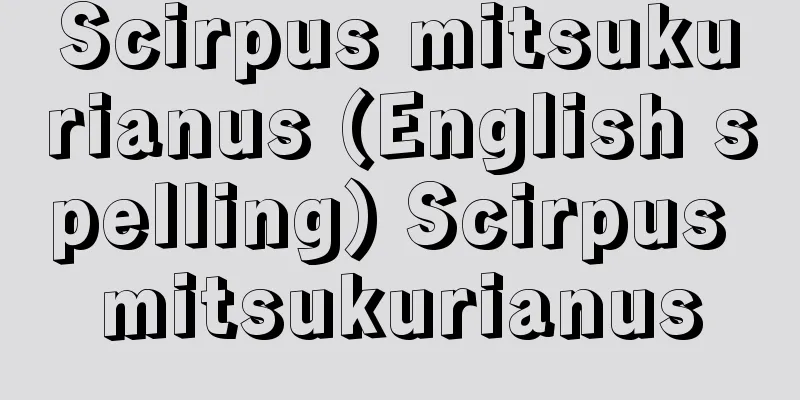Sumida Manor - Sudanosho

|
This manor spread north and south on both sides of the Kinokawa River, centered on Sumida-cho, Hashimoto City, Wakayama Prefecture. The time and circumstances of the establishment of the manor are unknown. However, it was established as a kunimensho at least by the end of the 10th century, and appears to have been part of Iwashimizu Hachimangu Shrine's territory during the Enkyu manor reorganization. In 1072 (Enkyu 4), it was only allowed to control 29 manors, menden, and yorindo, and in 1137 (Hōen 3) and 1162 (Ōhō 2), it was converted into a one-en-tō type manor after a dispute with Oga Manor, the territory of Koyasan Mitsugon-in Temple to the west. During the Kamakura period, it was divided into Sumida Kita Manor and Sumida Minami Manor, with the Kinokawa River as the border. With the establishment of the manor, Sumida Hachimangu Shrine, a branch shrine of Iwashimizu Hachimangu Shrine, was founded. Also, from the mid-Kamakura period onwards, a group of samurai called the Sumida Party was formed within the manor, centered around the Sumida Soryo family, who held the positions of manor official and civil administrator and Hachimangu Shrine betto. With the fall of the Kamakura Shogunate, the Sumida Soryo family, who had been vassals of the Hojo clan, fell into decline. On October 8, 1333 (Ganko 3, Shokei 2), Emperor Godaigo donated Sumida Minami Manor to Mount Koya. Sumida Kita Manor was given assurance to the Sumida clan, perhaps due to the achievements of Sumida Tadanaga (the ancestor of the Kuzuhara clan), who joined the Ashikaga side, and it came under the control of a clan alliance centered around the Kuzuhara clan. In 1355 (Shohei 10, Bunwa 4), the Sumida clan's joint petition was created, which included regulations regarding the failure to provide rice for the Sumida Hachiman Shrine. Sumida Minami-sho was divided into 49 Bunden (divided land) plots, which were controlled by the guso (official priests), and the Ueda clan of the Sumida clan, who were appointed as Geshi (lower official), were in charge of direct administration. During the Muromachi period, the Mandokoro clan, centered on the official class of Koyasan Sho, became powerful, and the Sumida Party's Ikki alliance was shaken, and the status of middle and lower class farmers also rose, strengthening their solidarity around the village halls in various parts of the manor. During the Sengoku period, the manor lost its function as a manor. [Keiko Gonpei] "The Rule and Structure of the Koyasan Estates" edited by Toyoda Takeshi (1977, Gannando Shoten)" ▽ "The History of the Civil Wars of the Northern and Southern Courts" by Sato Kazuhiko (1979, Yoshikawa Kobunkan) Source: Shogakukan Encyclopedia Nipponica About Encyclopedia Nipponica Information | Legend |
|
和歌山県橋本市隅田町を中心に紀(き)ノ川両岸に南北に広がっていた荘園。立荘の時期、事情は不詳。しかし少なくとも10世紀末には国免荘として成立しており、延久(えんきゅう)の荘園整理の際には石清水八幡宮(いわしみずはちまんぐう)領としてみえる。1072年(延久4)には荘田29町、免田(めんでん)と寄人(よりゅうど)の支配のみを認められており、1137年(保延3)、62年(応保2)の西隣の高野山密厳院(こうやさんみつごんいん)領相賀(おうが)荘との相論を経て一円領域型荘園へと転換。鎌倉期には紀ノ川を境に隅田北荘と隅田南荘に分かれた。立荘に伴い石清水八幡宮別宮の隅田八幡宮が創建された。また荘内には鎌倉中期以降、荘公文職(くもんしき)、八幡宮俗別当(べっとう)職を有する隅田惣領(そうりょう)家を中心に、武士団隅田党が結成された。鎌倉幕府の滅亡に伴い、北条氏の被官であった隅田惣領家は没落。1333年(元弘3・正慶2)10月8日隅田南荘は後醍醐(ごだいご)天皇により高野山に寄進された。隅田北荘は足利(あしかが)方に加わった隅田忠長(ただなが)(葛原氏の祖)の功によってか隅田一族中に安堵(あんど)され、葛原氏を中心とする一族連合による支配が行われた。1355年(正平10・文和4)には隅田八幡宮の神用米の未進に対する規定などを含む隅田一族連署起請文(きしょうもん)が作成された。隅田南荘は49口の分田(ぶんでん)に分割されて供僧(ぐそう)方による分田支配が行われ、直接の所務には下司(げし)に任じられた隅田一族の上田氏があたった。室町期には高野山荘官層を中心とする政所(まんどころ)一族が有力となり、隅田党の一揆(いっき)連合が動揺、さらに中下層農民の地位も上昇、荘内各地の村堂を中心に結束を強めた。戦国期に至り荘園としての機能は失われた。 [権平慶子] 『豊田武編『高野山領庄園の支配と構造』(1977・巌南堂書店)』▽『佐藤和彦著『南北朝内乱史論』(1979・吉川弘文館)』 出典 小学館 日本大百科全書(ニッポニカ)日本大百科全書(ニッポニカ)について 情報 | 凡例 |
>>: Stanisław August Poniatowski
Recommend
Banquet
〘 noun 〙 The act of setting up a party for food an...
Andreae, J.
…He played an important role in the Rosicrucian m...
Sceliphron
...Related species found in Japan include the lar...
Coastal Fisheries Development Law - Coastal Fisheries Development Law
... Japan's fishing industry, which has expan...
Topknot - Chonmage
A hairstyle for men in the Edo period, in which th...
Anomaloscope - Anomaroscope (English spelling)
A testing device that classifies types of color v...
Shuzo Takiguchi
Poet and art critic. Born in Toyama Prefecture. St...
abyssal tholeiito (English spelling) abyssaltholeiito
...In addition, in 1960, Hisashi Kuno (1910-69) p...
Noritoshi Inokuma
Year of death: October 17, 1609 (November 13, 1609...
Dos Santos, T.
Other authors and books that have been introduced...
Ganser's syndrome
Ganser is also known as a daze. It is a hysterical...
Spatial frequency
The number of repetitions of a structure per unit ...
Cape Kamui
A cape located at the westernmost tip of the Shak...
NBA (Basketball)
...Professional basketball was launched in the Un...
Congo Red
〘Noun〙 (Congo red)⸨Congo red⸩ An azo dye synthesiz...








![American Railway Express [company] - AMERICAN RAILWAY EXPRESS](/upload/images/67cf3f16818d9.webp)
